
Someone went to alot of trouble to mount this GE MASTR II rig in a beautiful custom made 19" panel and chassis. It's tuned for 146.700 and is what might be considered "wideband FM" today.
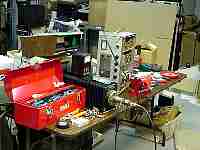
Upon firing the old beast up, we found the receiver to be fine, but the transmitter to be a little low on power. Everything was Ok until the PA grid tuning capacitor was being adjusted. "click!" and the power went to zero. The power was shut off and the search focused on the likely place, that capacitor.
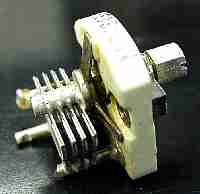
Sure enough, the pates had shorted together. somehow the shaft had moved back, forced by the tripod-like spring. The nut on the shaft, which held the shaft in pace, had cracked.
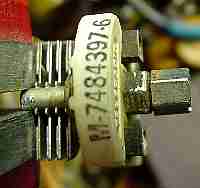
The cap was put in a vise, taking care with the plates.
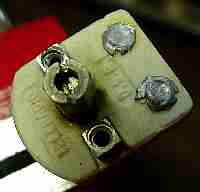
Here it can be seen how far down into the nut the actual shaft has slid.
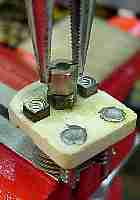
Trying to remove the nut with pliers. The nut was still pretty tight even though it had slipped.
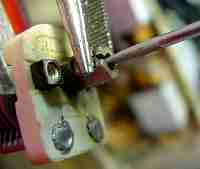
The nut was more easily removed when a screwdriver helped to hold the shaft from turning. Even though the back end of the shaft was in the vise, it was not so tightly gripped for fear of damaging the capacitor further.
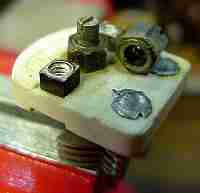
The nut is removed. There are no internal threads, this was a press-fit from the TELERADIO capacitor factory. The nut is made of brass and chrome plated.
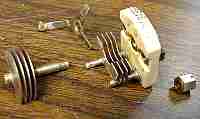
The cap was disassembled to check for excessive wear or anything else wrong, and put back together.
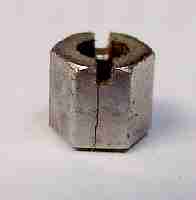
The cracked shaft nut.
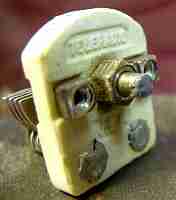
Since shaft nuts are not available for these any more, it was decided to try some "J-B Weld" epoxy. A very small amount was put on the shaft end, and some inside the nut, in the hopes that this would bond the nut to the shaft. The expoxy seen on the shaft here was cleaned from the sides of the shaft and left only at the end. only the tiniest amount was allowed to remain on the circumference of the shaft, in the hope of getting a bit of it stuck between the inner diameter of the nut and the outer diameter of the shaft, and at the same time avoiding getting any between the nut and the bearing end (which also looks like a nut here).
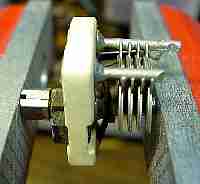
The nut was placed on the shaft and pressed carefully on in the vise.
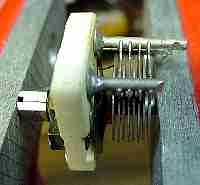
The vise was closed carefully until the pates were centered as they should be. This was left overnight to set.
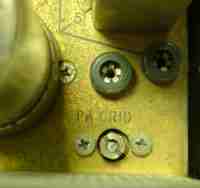
The next afternoon, the capacitor was removed from the vise, checked, and reinstalled in the radio. Notice the epoxy built up in the recess of the nut, where it has filled the slot of the shaft as well as bonded to the shaft and inner diameter of the nut. It should hold if not abused.
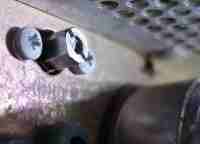
The radio set was then powered up and tuned in the normal manner to restore it to operation.
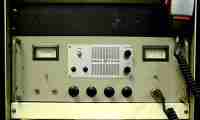
146.700 here we come!
50 watts of hot glass and iron, baby!